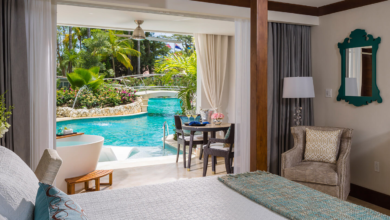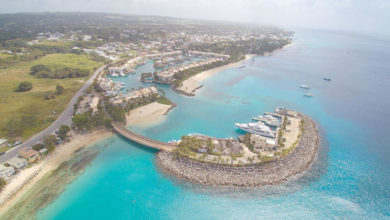Vietnam: Enchanting Landscapes, Rich Heritage, and Unforgettable Adventures

“Vietnam: Enchanting Landscapes, Rich Heritage, and Unforgettable Adventures”
Introduction:
Vietnam, a country steeped in history and natural beauty, beckons travelers with its captivating landscapes, vibrant culture, and warm hospitality. From the bustling streets of Hanoi to the serene waters of Ha Long Bay and the ancient wonders of Hoi An, Vietnam offers a tapestry of experiences that will ignite your sense of adventure and leave you enchanted. Embark on a journey through this Southeast Asian gem, where every corner reveals a new story and every encounter leaves an indelible mark on your heart.
- Unveiling Timeless Heritage:
Step into the past as you explore Vietnam’s rich heritage and ancient wonders. Begin your journey in Hanoi, the country’s capital, where ancient temples, colonial architecture, and bustling markets coexist in harmony. Immerse yourself in the history of the Imperial Citadel of Thang Long and pay homage to the iconic One Pillar Pagoda. In Hue, the former imperial capital, be captivated by the grandeur of the Imperial City and the tranquil beauty of the Perfume River. The ancient town of Hoi An, with its well-preserved architecture and lantern-lit streets, offers a glimpse into Vietnam’s trading past. - Majestic Natural Landscapes:
Vietnam’s natural landscapes are a sight to behold, from the breathtaking karst formations of Ha Long Bay to the verdant rice terraces of Sapa. Cruise through the emerald waters of Ha Long Bay, a UNESCO World Heritage site, as limestone pillars rise dramatically from the sea, creating a surreal and ethereal atmosphere. Trek through the misty mountains of Sapa, encountering cascading waterfalls, terraced rice fields, and vibrant hill tribe communities. The serene beauty of Phong Nha-Ke Bang National Park, home to spectacular caves and underground rivers, will leave you in awe of nature’s wonders. - Culinary Delights:
Vietnam’s cuisine is renowned worldwide for its delightful flavors and fresh ingredients. Indulge in a culinary adventure as you savor iconic dishes like pho (noodle soup), banh mi (baguette sandwich), and fresh spring rolls. Explore the bustling food markets of Hanoi and Ho Chi Minh City, where the aroma of street food fills the air and vendors whip up mouthwatering delicacies. Take a cooking class in Hoi An and learn the art of Vietnamese cuisine, discovering the secrets behind dishes that have tantalized taste buds for centuries. - Vibrant City Life:
The cities of Vietnam pulse with energy and offer a unique blend of ancient traditions and modern development. Ho Chi Minh City, formerly Saigon, mesmerizes with its French colonial architecture, bustling markets, and vibrant nightlife. Explore the historic Cu Chi Tunnels, a testament to Vietnam’s resilience during the war. Hanoi, with its narrow streets and bustling Old Quarter, invites you to wander through time, while Da Nang, a modern coastal city, offers beautiful beaches and a thriving food scene. - Cultural Immersion:
Vietnam’s cultural heritage is deeply intertwined with its people. Engage with locals in rural villages and witness their way of life, from traditional farming techniques to craft-making traditions. Visit ethnic minority communities in the mountainous regions, where you can learn about their unique customs and traditions. Attend traditional festivals, such as Tet (Lunar New Year), and witness colorful processions, dragon dances, and fireworks that epitomize the spirit of Vietnam. - Outdoor Adventures:
Adventure enthusiasts will find plenty to excite them in Vietnam’s diverse landscapes. Trek through the lush jungles of Cat Ba National Park, kayak along the Mekong Delta’s winding waterways, or embark on a motorbike journey along the breathtaking Hai Van Pass. Conquer the towering sand dunes of Mui Ne on a thrilling dune buggy ride or go diving in the crystal-clear waters of Nha Trang, discovering a vibrant underwater world.
Conclusion:
Vietnam, a land of ancient traditions, mesmerizing landscapes, and warm-hearted people, invites you to embark on a journey of discovery and adventure. Immerse yourself in its rich heritage, marvel at its natural wonders, savor its tantalizing cuisine, and embrace the vibrant spirit of its cities. Let Vietnam captivate your senses and leave an indelible mark on your travel memories as you explore this enchanting Southeast Asian gem.

Here are some additional details about travel and tourism in Vietnam:
- Ha Giang Loop:
For adventurous travelers seeking a road trip off the beaten path, the Ha Giang Loop is a must-do. Located in the northernmost province of Vietnam, Ha Giang is known for its stunning mountainous landscapes and ethnic minority communities. The loop takes you through breathtaking valleys, winding roads, and terraced rice fields, offering panoramic views at every turn. Encounter local tribes, such as the Hmong and Dao, and witness their traditional way of life. This motorbike adventure is an opportunity to explore the raw beauty of Vietnam’s remote regions. - Mekong Delta:
The Mekong Delta in southern Vietnam is a maze of rivers, canals, and lush greenery, earning it the nickname “Vietnam’s rice bowl.” Take a boat tour along the Mekong River and its tributaries, immersing yourself in the vibrant riverine culture. Visit colorful floating markets, where locals trade goods from boats, and witness the daily life of riverside communities. Explore fruit orchards, coconut groves, and traditional craft villages, and savor the flavors of fresh tropical fruits and regional delicacies. - Central Highlands:
The Central Highlands of Vietnam are a captivating region known for its scenic landscapes and cultural diversity. Explore the stunning landscapes of Dalat, a charming hill station renowned for its cool climate, flower gardens, and picturesque lakes. Discover the unique traditions of ethnic minority groups like the Ede, Bahnar, and Jarai, who reside in traditional longhouses and maintain their distinct customs and crafts. Trek through the lush forests of Yok Don National Park, home to elephants, and immerse yourself in the natural beauty of this lesser-explored region. - Beaches and Islands:
Vietnam boasts a coastline that stretches over 3,000 kilometers, offering a plethora of stunning beaches and islands. Phu Quoc Island, located in the Gulf of Thailand, is renowned for its white sandy beaches, crystal-clear waters, and vibrant coral reefs, making it a perfect destination for sun-seekers and snorkeling enthusiasts. Nha Trang, with its long sandy beaches and lively beachfront promenade, is a popular resort town offering a range of water sports and island-hopping excursions. For a quieter beach experience, head to the pristine shores of Con Dao Islands or the laid-back vibe of Mui Ne. - War Remnants Museum:
In Ho Chi Minh City, the War Remnants Museum provides a sobering insight into the Vietnam War and its aftermath. The museum exhibits photographs, artifacts, and displays that depict the harsh realities of the war and its impact on the Vietnamese people. Visitors can learn about the war’s history, the human toll, and the ongoing efforts for peace and reconciliation. Exploring this museum offers a somber yet important opportunity to understand Vietnam’s recent past and its resilience. - Caving Adventures in Phong Nha:
Phong Nha-Ke Bang National Park, a UNESCO World Heritage site, is a paradise for adventure seekers and nature enthusiasts. The park is renowned for its vast cave systems, including the spectacular Son Doong Cave, the largest known cave in the world. Take a guided tour and marvel at the magnificent stalactites, underground rivers, and unique rock formations. Explore other caves like Paradise Cave and Phong Nha Cave, where you can cruise along an underground river and admire the stunning limestone formations. Phong Nha offers an unforgettable experience for those seeking to venture into the depths of the Earth. - Vietnamese Water Puppetry:
Water puppetry is a traditional Vietnamese art form that originated in the Red River Delta region. Performances take place in water-filled stages where wooden puppets are manipulated by puppeteers using bamboo rods. The shows depict scenes from rural life, legends, and folklore, accompanied by live music and singing. Witnessing a water puppetry performance is a cultural immersion into Vietnam’s artistic heritage and an opportunity to appreciate the intricacies of this unique traditional art form. - Eco-Tourism in Sapa:
Sapa, nestled in the mountains of northern Vietnam, offers a gateway to eco-tourism and outdoor adventures. Set out on guided treks through terraced rice fields, crossing remote villages and encountering ethnic minority communities. Stay in homestays, where you can engage with local families, learn about their traditions, and participate in daily activities like farming or traditional handicrafts. Eco-tourism initiatives in Sapa aim to promote sustainable tourism practices that benefit local communities and preserve the region’s natural beauty.
Vietnam’s diverse landscapes, rich cultural heritage, and warm hospitality make it a captivating destination for travelers. Whether you seek adventure, cultural immersion, natural wonders, or historical insights, Vietnam offers a tapestry of experiences that will leave you with cherished memories of this enchanting country.

Here are some more aspects to explore when visiting Vietnam:
- Festivals and Celebrations:
Vietnam is known for its vibrant festivals and celebrations, which provide a unique glimpse into the country’s cultural traditions. One of the most significant festivals is Tet Nguyen Dan, the Lunar New Year celebration. During Tet, the streets come alive with colorful decorations, lion dances, and firecrackers. Join in the festivities, taste traditional foods, and witness the lively atmosphere as locals welcome the new year. Other notable festivals include the Mid-Autumn Festival, which features lantern processions and mooncakes, and the Hung Kings Temple Festival, honoring Vietnam’s legendary founders. - Vietnamese Coffee Culture:
Vietnam has a thriving coffee culture that is deeply ingrained in its daily life. Take the opportunity to experience a traditional Vietnamese coffee shop, known as a “cafe sua da.” Indulge in a cup of rich and aromatic Vietnamese coffee, typically prepared with dark roasted beans and served with sweetened condensed milk. Explore the coffee scene in Hanoi’s Old Quarter or Ho Chi Minh City’s trendy cafes, where you can witness the art of brewing and enjoy the laid-back ambiance. - Traditional Crafts and Artisans:
Vietnam has a rich tradition of handicrafts and artisanal skills. Explore the lively streets of Hoi An, where you can find tailors creating custom-made clothing and skilled craftsmen producing lanterns, pottery, and silk products. Visit craft villages, such as Bat Trang for ceramics, Van Phuc for silk weaving, and Dong Ho for traditional woodblock prints. Engage with artisans, learn about their techniques, and even try your hand at creating your own masterpiece. - Homestays and Community Tourism:
Immerse yourself in the local culture and gain a deeper understanding of Vietnamese life by staying in a homestay. These accommodations, often located in rural areas or ethnic minority villages, offer a unique opportunity to connect with local families, participate in daily activities, and learn about their customs and traditions. Community-based tourism initiatives promote sustainable practices and provide economic benefits to local communities. By staying in a homestay, you can contribute to the preservation of traditional ways of life and support the local economy. - Vietnamese Traditional Medicine and Spas:
Vietnam has a long history of traditional medicine, influenced by Chinese practices. Discover the art of Vietnamese herbal medicine, which utilizes natural ingredients in the form of herbal remedies, acupuncture, and massage techniques. Pamper yourself with a traditional Vietnamese spa experience, where you can indulge in rejuvenating treatments like herbal baths, hot stone massages, or reflexology. Hanoi and Ho Chi Minh City offer a range of spa options to relax and rejuvenate after your travels. - Sustainable Travel:
As responsible travelers, it’s essential to prioritize sustainable practices when visiting Vietnam. Choose eco-friendly accommodations, support local businesses and artisans, and be mindful of your environmental impact. Participate in community-based tourism initiatives that empower local communities and contribute to their well-being. Respect cultural norms and traditions, and engage with local customs with sensitivity and understanding.
Vietnam’s allure lies in its diversity, from its stunning natural landscapes to its rich cultural heritage. By exploring the country’s festivals, coffee culture, traditional crafts, and community-based tourism initiatives, you will gain a deeper appreciation for Vietnam’s unique identity and leave with cherished memories of your time in this enchanting country.

Here are some additional aspects to delve into when exploring Vietnam:
- Vietnamese Cuisine:
Vietnamese cuisine is celebrated worldwide for its fresh flavors, vibrant herbs, and diverse dishes. Sample iconic dishes like pho (noodle soup), banh mi (Vietnamese sandwich), and fresh spring rolls. Each region of Vietnam has its own culinary specialties, such as bun cha (grilled pork with noodles) in Hanoi or cao lau (pork and noodle dish) in Hoi An. Don’t miss the opportunity to try local street food, indulge in seafood delicacies along the coast, and savor the unique flavors of Vietnamese cuisine. - French Colonial Influence:
Vietnam’s history includes a period of French colonial rule that has left a lasting impact on its architecture, cuisine, and culture. Explore the French Quarter in Hanoi, characterized by its elegant colonial-era buildings, wide boulevards, and charming cafes. In Ho Chi Minh City, visit the Notre Dame Cathedral and the Central Post Office, both architectural remnants of the French colonial era. The fusion of Vietnamese and French influences creates a unique blend that adds to the country’s cultural tapestry. - Traditional Martial Arts:
Vietnam has a rich tradition of martial arts, with various styles and forms that have been passed down through generations. Discover the art of Vovinam, a Vietnamese martial art that combines self-defense techniques, acrobatics, and traditional philosophies. Watch performances or even take part in training sessions to learn basic moves and understand the discipline and cultural significance of Vietnamese martial arts. - Hill Tribe Trekking:
Venture into the mountainous regions of northern Vietnam for immersive hill tribe trekking experiences. Trek through picturesque landscapes, encountering ethnic minority communities such as the Hmong, Dao, and Tay. Witness their traditional way of life, learn about their customs and traditions, and stay in their villages for an authentic cultural experience. Engaging with the hill tribes provides insights into Vietnam’s diverse ethnic groups and their unique contributions to the country’s cultural fabric. - Traditional Performing Arts:
Vietnam boasts a rich tradition of performing arts that have been passed down for generations. Experience the captivating art of “ca tru,” a form of Vietnamese chamber music that combines singing, dancing, and traditional instruments. Attend a water puppetry show, where intricately carved wooden puppets perform on a water stage accompanied by live music and singing. These traditional art forms showcase the creativity and artistic mastery of the Vietnamese people. - National Parks and Biodiversity:
Vietnam is home to several national parks and protected areas that preserve its diverse ecosystems and rich biodiversity. Explore Cat Tien National Park, known for its lush forests, rare wildlife species like the Javan rhinoceros, and opportunities for hiking and wildlife spotting. Discover the beauty of Ba Be National Park, with its emerald lakes, limestone cliffs, and ethnic minority villages. These natural sanctuaries offer a chance to immerse yourself in Vietnam’s pristine landscapes and observe its remarkable flora and fauna. - Vietnamese Literature and Poetry:
Vietnam has a long and esteemed literary tradition, with notable poets and writers throughout its history. Dive into Vietnamese literature, reading works by renowned authors like Nguyen Du, who penned the epic poem “The Tale of Kieu,” or Nguyen Hien Le, known for his modernist poetry. Explore bookstores and poetry cafes in Hanoi and Ho Chi Minh City, which often host literary events and discussions. Engaging with Vietnamese literature provides insights into the country’s cultural and intellectual heritage. - Vietnamese Silk and Textiles:
Vietnam is renowned for its silk production and textile craftsmanship. Visit silk villages like Van Phuc or Hoi An, where you can witness the intricate process of silk weaving and purchase high-quality silk products. Explore markets and boutique shops to discover beautifully crafted traditional garments, hand-embroidered textiles, and colorful ethnic minority textiles. The artistry and attention to detail in Vietnamese silk and textiles are a testament to the country’s rich cultural heritage.
By immersing yourself in Vietnamese cuisine, exploring the French colonial influence, experiencing traditional martial arts and performing arts, trekking to hill tribe villages, appreciating the country’s literature and poetry, and discovering its silk and textile craftsmanship, you will gain a deeper appreciation for Vietnam’s cultural richness and leave with a more profound understanding of its people and heritage.



